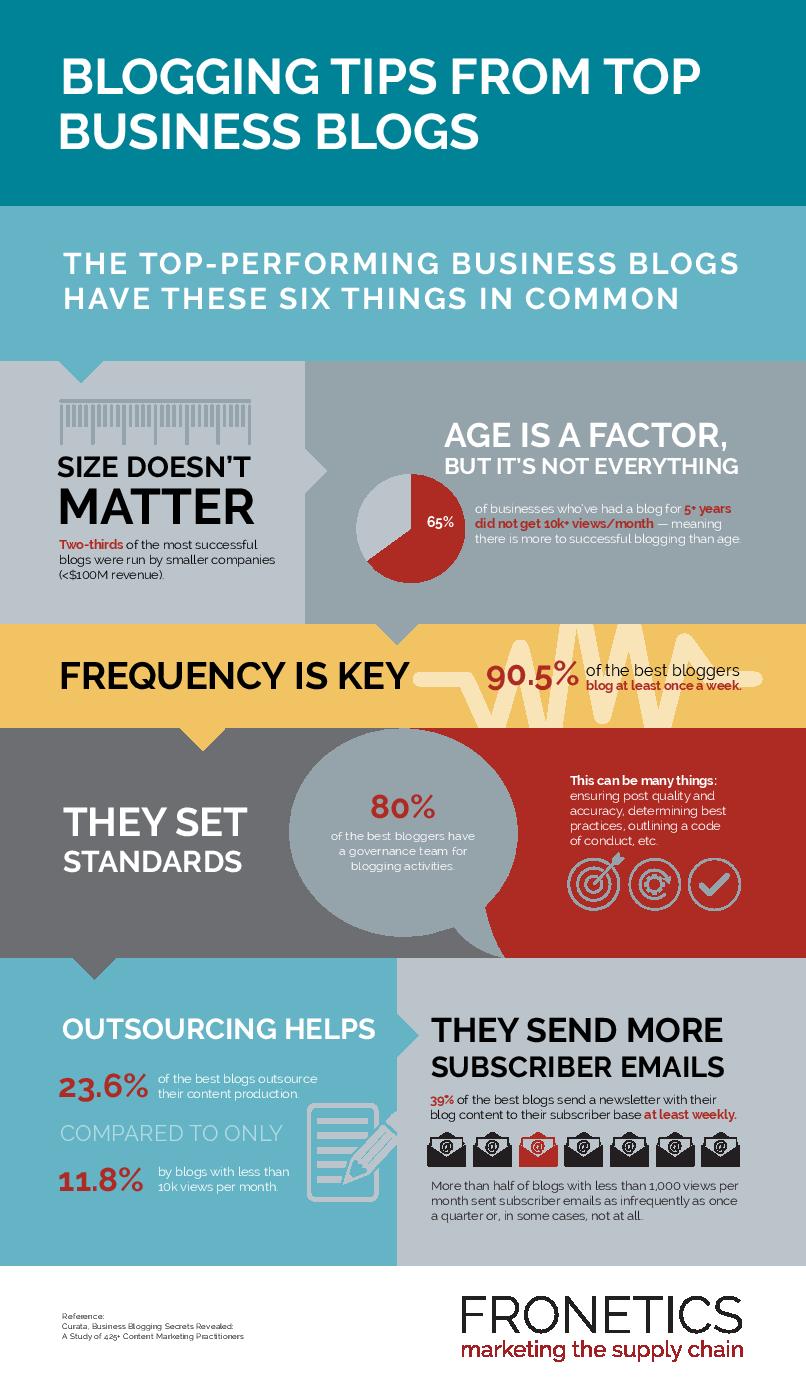
by Fronetics | Mar 2, 2017 | Blog, Content Marketing, Marketing, Social Media
These online benchmarking tools can give you insight into how your industry peers are performing on social media, in keyword searches, and more.
Senior Director of Strategy Kate Lee recently wrote about the importance of benchmarking your marketing performance against your competitors. To define success within your market and industry, you need to look outside what’s going on internally and compare yourself to your peers. This will also help your company identify threats and strategic opportunities.
Benchmarking gives you a context to understand how your marketing efforts are paying off. But running another set of reports and keeping track of all those metrics could be a full-time job within itself — and ain’t nobody got time for that.
The good news is there are some really effective tools available for marketers to quickly, even automatically benchmark their performance against the competition. Let’s take a look at three of these platforms below.
3 tools to benchmark your performance
1) BuzzSumo
BuzzSumo’s slogan, “Add value, be uncommon,” exemplifies its mission: to assist companies in creating the most relevant content for their individual audiences. The comprehensive content tool offers insight on what topics are trending, which influencers have the most reach, and more.
The competitor research feature will be of particular interest to those hoping to do some competitive benchmarking. It offers competitive intelligence, such as:
- What content is getting traction for my competitors?
- On what networks are they having success?
- Who is sharing their content?
- How does our content compare?
Overall this site will save you time that you would have spent compiling and analyzing data about you and your competitors.
Pricing: BuzzSumo’s pricing varies from $79-$599 per month, but there’s a free trial option to help you decide if Buzz Sumo is right for your company.
Ease of use: There’s a lot of information to digest, but the compelling data displays make it as easy as possible.
Clients: Rolling Stone, Expedia, National Geographic, IBM, Capital One
2) Serpstat
Serpstat identifies itself as the “growth-hacking tool of marketing” and the “all-in-one SEO platform for professionals.” It offers an abundance of insightful features to view your data in comparison with your competition. You can find answers to the following questions:
- What keywords are placing your competitors in the top search results?
- What does your competitors’ AdWords and paid search look like?
- What does your competitors’ strategy look like in regard to their budget, ad positions in search results, and cost-per-click for AdWords?
Pricing: Serpstat ranges anywhere from $0-$299.
Ease of use: While Serpstat provides an overwhelming amount of information, their 24/7 user-friendly chat feature makes things a little easier. They also offer a completely free demo via Skype or Google Hangouts in as little as 20 minutes.
Clients: Yves Rocher, Gift Baskets Overseas, GL Marketing
3) Rival IQ
Rival IQ offers “digital marketing analytics with a competitive edge.” Essentially, it allows you to compare your performance in social media, keyword ranking, and content against other companies. You also learn when growth in those categories happens for your company, as well as what is driving it. It answers:
- What do your social media metrics (followers, likes, etc.) look like versus your competitors?
- What do your competitors’ social biographies look like, and what are they changing?
- What do the “best” social media posts look like across your competitive landscape?
Pricing: anywhere from $299-$799. They’ll even work with you to create a customized package. A free trial is also available.
Ease of use: While the information presented is extensive, it is displayed in a way that makes it easy to digest. According to New York Times best-selling author Jay Baer, “Rival IQ is a game-changer. Incredibly useful intelligence about the digital activities and successes of your competitors, delivered quick, easy and smart.”
Clients: Studio Science, the Media Flow, Convince & Convert
These three benchmarking tools can help your business gauge how you’re fairing against the competition. The right one for your company could give you a competitive edge, helping you surpass your goals — and your competition.
Related posts:


by Fronetics | Feb 20, 2017 | Blog, Content Marketing, Marketing, Supply Chain
A recent survey of over 400 business blogs shows what the best bloggers have in common and what supply chain marketers can do to improve their blogs.
Maintaining a blog for your business can be somewhat of a guessing game. How often should you publish? Should you do all the writing in-house? Will anyone read our posts?
A recent survey of 428 marketers conducted by Curata sought to identify any patterns or trends among those with the most successful business blogs. Specifically, the authors grouped together those whose blogs had more than 10,000 views per month and compared them to those with less than 10,000 views per month.
The most successful blogs (those with over 10,000 views per month) have several things in common. The following infographic shows some highlights from the survey.

(Made with Canva)
Read the full report from Curata’s survey here to get more insight into the best business blogs. For more information and tips on blogging for your supply chain business, check out our related posts below.
Related posts:

by Fronetics | Feb 15, 2017 | Blog, Content Marketing, Marketing, Strategy
Ask yourself these six questions to see if you could be attracting more leads by writing better content.
All too often, marketers fall into the trap of sacrificing quality for quantity in their content writing efforts. It’s an easy mistake to make — the pressure to produce a constant stream of content can naturally lead to a drop in quality. But if you’re not writing high-quality, substantive content, you’re wasting time and energy.
If you’re wondering whether your content might not measure up, ask yourself these six questions.
Do you need better content?
1) Is my content search-engine optimized?
Since over three-quarters of today’s buyers use Google to research products, a key to making sure your content is showing up in search results is search engine optimization (SEO). This means writing copy that will be prioritized by Google in web queries related to your business or products. For ideas on SEO optimization, check out these 3 Quick SEO Tips to Improve Your Blog Right Now.
2) Am I using the right channels to reach my target audience?
In order to answer this question, you first need to have a clearly defined idea of your target audience. Once you know who you’re trying to reach, evaluate where they’re active. Analytic programs like Google Analytics and sites like Tweriod can provide valuable insights on your followers’ social media habits.
3) Am I publishing content, or a sales pitch?
Remember that content marketing is about offering valuable, expert information to your audience — it’s not an overt sales pitch. Present your readers with this kind of expertise, rather than a repeated sales pitch, and you attract loyal customers, and associate your brand with quality and value. Anything you post should be geared to meet specific needs of your customer, rather than to bludgeon them with information about your products or services.
4) Am I providing a good quality user experience?
Pay attention to format, length, accessibility, and voice. Is your business’ website visually appealing and easy to navigate? People will read your content only if it’s visually accessible and engaging.
5) Have I paid attention to performance analytics?
Be aware that what worked last year may not work this year — pay attention to performance analytics to monitor what kind of content is successful and what is no longer generating and converting leads.
6) Is my content good?
This might seem like the most obvious question of all, but it’s important to ask it every time you post. Of course, determining what constitutes good and bad content is the key here. Are you producing writing that is original, substantial, and well written? A good tool to get you started is Fronetics’ On Writing Good Content: A Guide for the Logistics and Supply Chain Industries.
Remember, your content is a reflection of your company. When potential buyers come across your blog posts or other content online, that’s how they get to know you. If it’s poorly written with mistakes and blurry images, well — you look pretty sloppy.
Quality, substantive content shows that you are an authority in your field. It will let potential buyers know that you know what you’re talking about, that you run a polished business, and that they can trust you. So while quantity is important when it comes to content, quality should never be compromised.
Related posts:


by Fronetics | Feb 9, 2017 | Blog, Content Marketing, Marketing, Strategy
Time can be a blog’s best friend when it comes to gaining leads, but there are a few things you can do to accelerate lead-generation efforts.
Patience is a virtue, but it’s a particularly difficult one to mind when you’re trying to get your business off the ground.
Whether you are just starting out, are trying to turn things around, or are just looking to inject a little energy into things after some slow growth, your company has probably made an investment in your marketing efforts. Now comes the tough part, if you’re on the marketing team: The bosses are going to want to see results in the form of leads and sales.
Fair enough. Blogging is one of the best ways to boost your lead-generation efforts. The trouble is, however, that is normally takes some for those benefits to come to fruition.
I’m not going to say it’s a marathon…
But blogging is certainly not a sprint. Your posts need time to start drawing traffic — and then, from traffic comes leads. So the transitive property tells us that lead generation takes time. Here’s why.
As with many things, blog posts become more credible with age. That is to say, search engines value things that older content has had more time to accumulate, like social shares and referrals from other web pages. The more relevant a blog post proves itself to be to readers over time, the higher it will rank in search engine results.
On the other hand, new blogs without much content don’t have much to tell search engines. Search engines don’t trust them yet — and search engines’ algorithms are designed to avoid leading searchers down a stray path. So posts from new or young blogs are less likely to appear within the first page(s) of search results, which is key to sourcing organic traffic.
So what’s a marketer who is charged with generating leads to do?
Set realistic expectations
Be realistic about how quickly your blog will start generating leads when you first set your content strategy. Consider things like the length of your sales cycle. You can’t expect a reader to hasten down the sales funnel any faster than a normal prospect. And remember that the reader probably won’t catch your post on the first day it’s published. (More on that later.) So, if your sales cycle is 90 days, you might see a lead 90 days after you start publishing. But, in reality, it will probably take a little longer.
Instead of relying entirely on leads to define success, you should spend the first months focusing on the metrics that are precursors to lead generation. Increased web traffic and greater social reach and engagement, for example, are solid proof that the needle is moving in the early days of a new content marketing program. Set goals for these metrics, and communicate with leadership that they are all indicators that your content strategy is working, and that leads should follow in time.
But how can I get my blog to generate leads faster?
If you want to accelerate lead generation, it’s going to take a greater investment. But if you’re willing to commit more time and resources to speed things along, here are two things you can do.
1. Publish more frequently.
Search engines value posting frequency because it shows that your blog is a consistent source of content. The question is, how much can your organization publish without experiencing a decline in quality and relevancy? Those are other factors influencing search engine rankings, not to mention readership, leads, and conversions.
But “more frequently” doesn’t have to mean going from 0 to 60. Even publishing once more per week can make a dramatic impact. This story, for example, shows how publishing one more post per week helped a client’s web traffic increase by 23%, sales leads double, and a prospect convert to a customer — and that was just in just one month.
A HubSpot study showed a tipping point around 400 total blog posts — blogs with 401+ total posts generated twice as much traffic as those that had published 301-400 posts. And more specifically, B2B companies with 401+ total blog posts generated nearly 3X as many leads as those with 0-200 posts. The faster you can reach that 400 mark, the quicker your results.
2. Don’t neglect your old content
It’s important to keep in mind that the majority of your web traffic (aka potential leads) will first encounter your older content. Looking at Fronetics’ most-viewed posts last month, for example, 80% were published at least six months prior. In fact, 50% were more than a year old.
What does that mean? For one, you should keep tending to your already published content, particularly those posts that prove to be a consistent source of traffic. Update information; add links to new related posts or other relevant resources; and seek opportunities to insert or update calls-to-action to current offers and campaigns. Making sure those older, consistently popular posts continue to serve and engage your readers will increase your chances of conversion.
Secondly, it’s crucial that you look beyond how the posts you published recently performed. Something that doesn’t get a lot of views in the first week may be a huge traffic source and lead converter in a little time. Many content management systems, like HubSpot, can generate attribution reports, which tell you which web pages users most often visit before converting to a lead. Compare these pages with your high-traffic pages that don’t make the list to see how you can create more opportunities for lead conversion on the pages earning the most traffic.
Most importantly, if you invest the time and resources to run a blog, you owe it to yourself to see it through to success. Just because you don’t generate hundreds of leads in the first few months doesn’t mean you won’t eventually. It’s just going to take some time.
Related posts:


by Fronetics | Jan 25, 2017 | Blog, Content Marketing, Marketing, Strategy
To stay relevant following Google’s mobile-first approach, marketers need to examine their company’s mobile user experience.
Marketers, take notice: Google’s announcement that it is experimenting with a “mobile-first” search index is a reminder to examine your website content and configuration. The message from the search engine giant is clear: Now is the time to enhance your company’s mobile online experience.
A mobile-first society
The future is pointing toward increasing mobile device use. In 2015, mobile traffic accounted for more than half of internet traffic, and that percentage is growing. Google reported that more searches take place on mobile devices than on desktops. In response to this trend, Google’s new algorithms will rank mobile-friendly web pagers higher in search results than desktop pages.
These days, it’s pretty much a given that your clients and customers own a mobile device and use it quite often in their professional lives. Your site needs to meet the expectations of the viewer, which is to access content easily via mobile. If you fall short of this, you’ll lose credibility and, ultimately, income.
What do B2B marketers need to do?
Google currently uses two indexes to rank search results, 1. desktop pages and 2. mobile pages. If Google makes good on its promise to have a mobile-only index, websites optimized for mobile use will get higher billing at the top of search results, leading to more clicks, more brand recognition, and, ultimately, more sales.
Marketers need to prepare now to ensure a prominent place in Google’s search results. Here are three tips on how to do that.
- Develop a strong working relationship with your webmaster — they are in the experts on the technical side and can keep you abreast of updates and trends in website optimization.
- Conduct an audit of your websites to check for SEO. Use a website such as http://responsivedesignchecker.com/ to give you real-time feedback.
- Become familiar with these three methods of web development:
- Responsive web design – allows website pages to adapt to whatever size screen the viewer is using.
- Dynamic serving – the server responds with different HTML (and CSS) on the same URL depending on the user agent requesting the page
- Mobile-only URL – each desktop URL has an equivalent different URL serving mobile-optimized content
Check here to see how your site is configured.
Google’s tips
Google offers tips to webmasters to make their sites mobile-first. If your site is already optimized for mobile with RWD or is a dynamic-serving site, you shouldn’t need to make any adjustments. But if not, work with your webmaster on the following:
- Serve structured markup for desktop and mobile versions
- Make sure your site is accessible to Googlebot
- Verify both desktop and mobile sites in Google’s Search Console
Should your business website be optimized for mobile searching? The short answer is undoubtedly yes.
Related posts:









